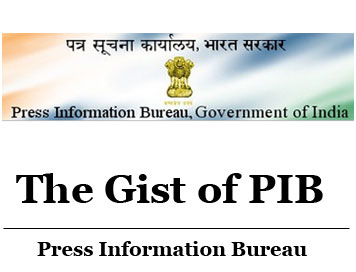(FREE) UPSC Current Affairs 2025 PDF
NEW! The Gist (AUG-2025) | E-BOOKS
(The Gist of PIB) Pencil Portal

(THE GIST OF PIB) Pencil Portal
[June-2021]
Pencil Portal
- Union Minister of Women and Child Development has Appealed to Citizens to report the instances of Child Labour on PENCIL Portal or by calling on Childline-1098.
- The World Day Against Child Labour is observed on 12th June every year around the world.
- The International Labour Organization (ILO) launched the World Day Against Child Labour in 2002 to focus attention on the global extent of child labour and the action and efforts needed to eliminate it.
About the portal:
- The Platform for Effective Enforcement for No Child Labour (PENCIL) Portal on Child Labour is organised by the Ministry of Labour and Employment, Government of India.
- It is an electronic platform that aims at involving Centre, State, District, Governments, civil society and the general public in achieving the target of child labour free society.
- The purpose of this portal is to provide a mechanism for both enforcement of the provisions of Child Labour Act and effective implementation of the National Child Labour Project (NCLP) Scheme for rehabilitation of child & adolescent labour.
- Components: The main components of PENCIL portal are complaint corner, child & adolescent labour tracking system, NCLP and State Resource Centre which are connected with the Ministry of Labour & Employment.
- The data obtained on the portal is to be shared with the Ministry of Women & Child Development, Ministry of Human Resource Development and Ministry of Skill Development & Entrepreneurship.
- At the State Government level the monitoring is to be done by the State Resource Centre established at the State Labour Department.
- At district level District Nodal Officers (DNOs) are nominated to take action on the complaints of their respective districts.
Related Information:
- The Child Labour (Prohibition and Regulation) Amendment Act, 2016.
- The Child Labour (Prohibition and Regulation) Amendment Act, 2016 completely prohibits the employment of children below 14 years.
- The amendment also prohibits the employment of adolescents in the age group of 14 to 18 years in hazardous occupations and processes and regulates their working conditions where they are not prohibited.
- The amendment also provides stricter punishment for employers for violation of the Act and makes the offence of employing any child or adolescent in contravention of the Act by an employer as cognizable offence (without warrant).
International Labour Organisation (ILO) :
- International Labour Organisation is a U.N. agency that was established in 1919.
- ILO brings together governments, employers and workers representatives of 187 member States, to set labour standards, develop policies and devise programmes promoting decent work for all women and men
- The principal means of action in the ILO is setting up the International Labour Standards in the form of Conventions and Recommendations
- Conventions are international treaties and instruments, which create legally binding obligations on the countries that ratify them.
- Recommendations are non-binding and set out guidelines orienting national policies and actions
- There are eight Core Conventions of the ILO (also called fundamental/human rights conventions) which are as follows
1. Forced Labour Convention (No. 29)
2. Abolition of Forced Labour Convention (No.105)
3. Equal Remuneration Convention (No.100)
4. Discrimination (Employment Occupation) Convention (No.111)
5. Freedom of Association and Protection of Right to Organised Convention (No.87)
6. Right to Organise and Collective Bargaining Convention (No.98)
- Minimum Age Convention (No.138)
- Worst forms of Child Labour Convention (No.182)
- The two Core Conventions directly related to child labour are that of ILO Convention 138 and 182. India has ratified both the Core Conventions of the International Labour Organization (ILO).
CLICK HERE TO DOWNLOAD FULL PDF
CLICK HERE TO DOWNLOAD UPSC E-BOOKS
Study Material for UPSC General Studies Pre Cum Mains
Get The Gist 1 Year Subscription Online
Click Here to Download More Free Sample Material
<<Go Back To Main Page
Courtesy: PIB

